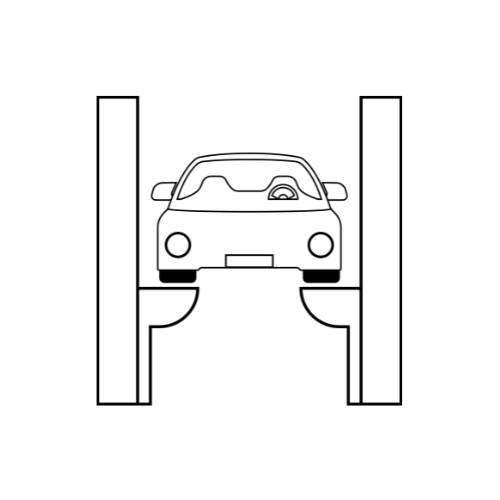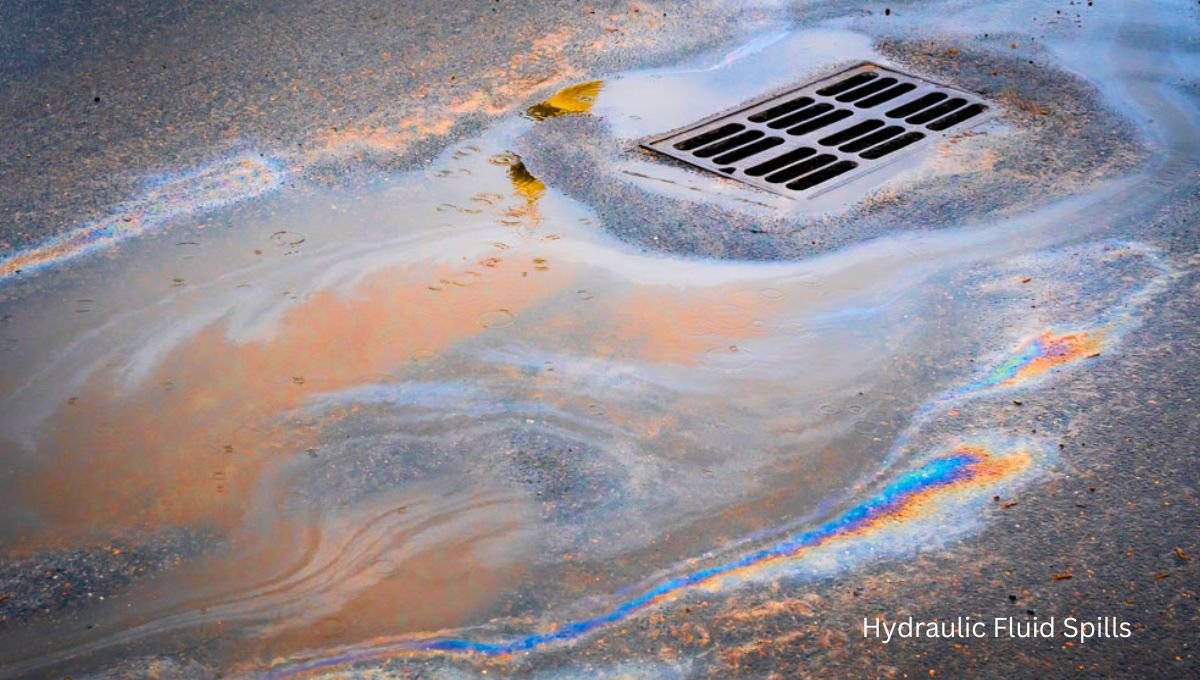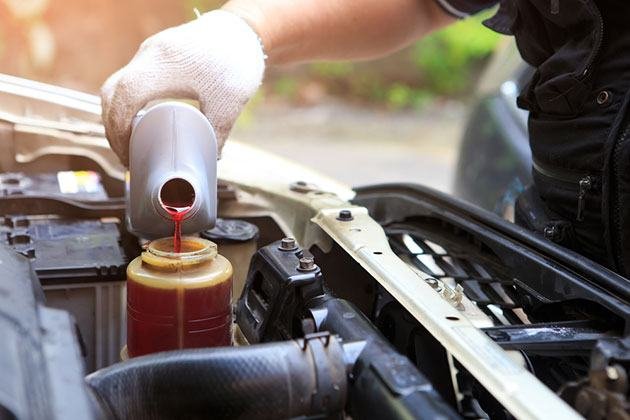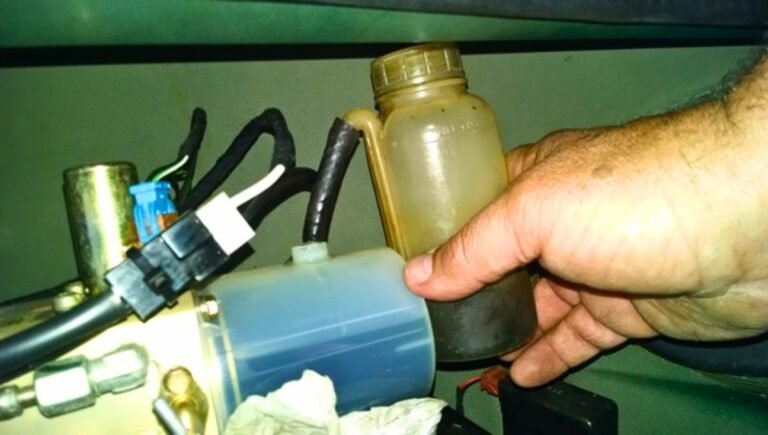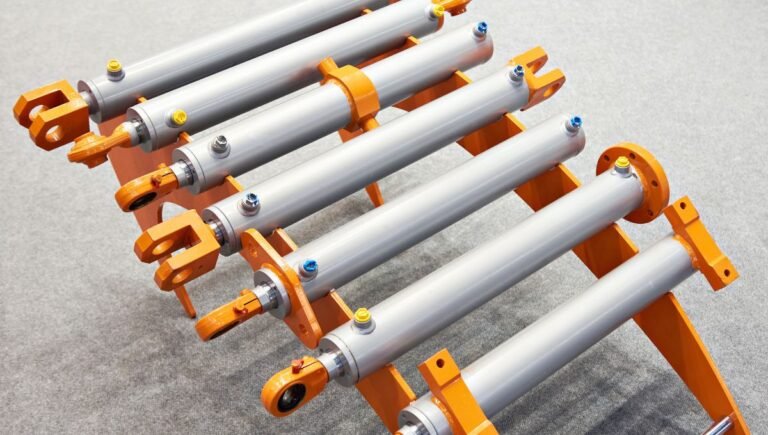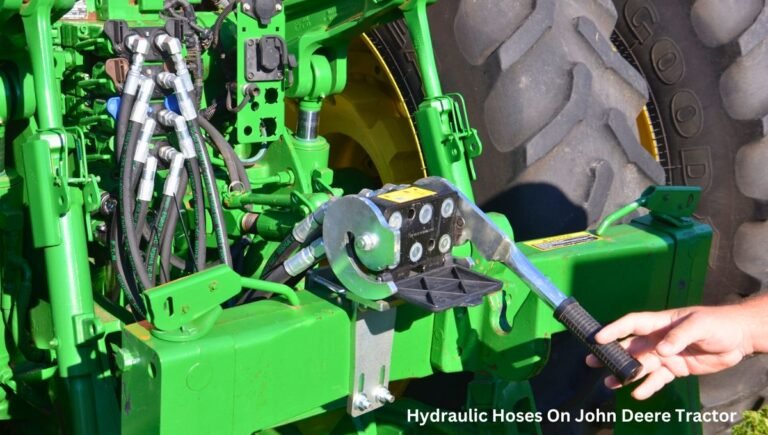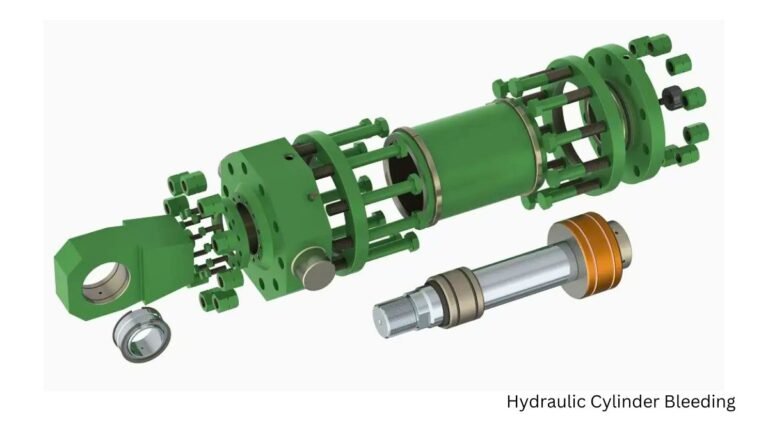How to Clean Hydraulic Fluid off Asphalt? Quick & Easy Tips
To clean hydraulic fluid off asphalt, first absorb the spill with cat litter or sawdust. Then, scrub with a degreaser and rinse.
Hydraulic fluid spills on asphalt can create hazardous, slippery surfaces and cause long-term damage. Quick and effective cleaning helps prevent accidents and prolongs the lifespan of the asphalt. Begin by spreading an absorbent material like cat litter or sawdust over the spill to soak up the fluid.
Once absorbed, sweep up the material and dispose of it properly. Apply a commercial degreaser to the affected area and scrub with a stiff brush. Rinse thoroughly with water to remove any remaining residue. Regular maintenance and prompt action are key to keeping asphalt surfaces safe and clean.
Introduction To Hydraulic Fluid Spills
Hydraulic fluid spills on asphalt can be a huge problem. They create slippery surfaces and damage the asphalt. Cleaning up quickly is essential.
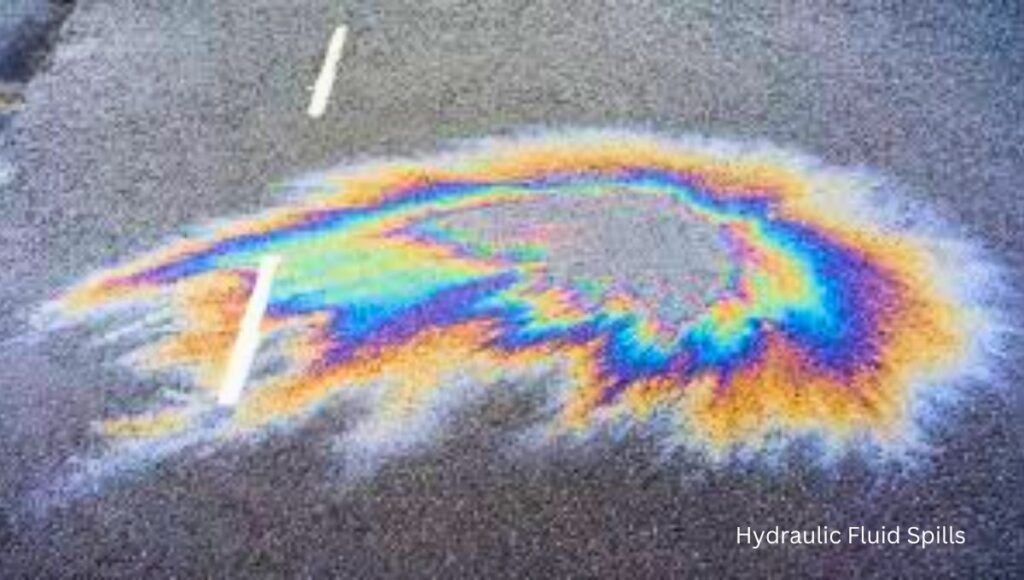
Why Speed Matters
Speed is crucial when dealing with hydraulic fluid spills. The longer the fluid sits, the harder it is to remove. Quick action can prevent stains and damage.
- Quick action prevents deep stains.
- Fast cleanup stops the fluid from spreading.
- Immediate response keeps the area safe.
Impact On Asphalt
Hydraulic fluid can damage asphalt significantly. The chemicals in the fluid break down the asphalt. This leads to cracks and potholes.
| Impact | Explanation |
|---|---|
| Staining | The fluid leaves dark, oily spots. |
| Weakening | The chemicals break down asphalt structure. |
| Potholes | Damaged asphalt can lead to potholes. |
Regular maintenance and quick cleanup can protect your asphalt from these issues.
Safety First
Cleaning hydraulic fluid off asphalt requires attention to safety. This fluid can be slippery and harmful. Always prioritize safety to prevent accidents.
Protective Gear Essentials
Wear proper gear to protect yourself. Here is what you need:
- Gloves to protect your hands from chemicals.
- Goggles to shield your eyes from splashes.
- Boots to prevent slipping on the oily surface.
- Mask to avoid inhaling any fumes.
Securing The Spill Area
Ensure the spill area is secure to avoid accidents. Follow these steps:
- Place warning signs around the spill area.
- Use barriers to block off the area.
- Inform others about the spill to keep them away.
| Task | Action |
|---|---|
| Put on gear | Wear gloves, goggles, boots, and mask |
| Secure area | Place signs, set up barriers, and inform others |
Immediate Steps To Take
Cleaning hydraulic fluid off asphalt requires quick action. Immediate steps can prevent long-term damage. These steps ensure safety and effectiveness.
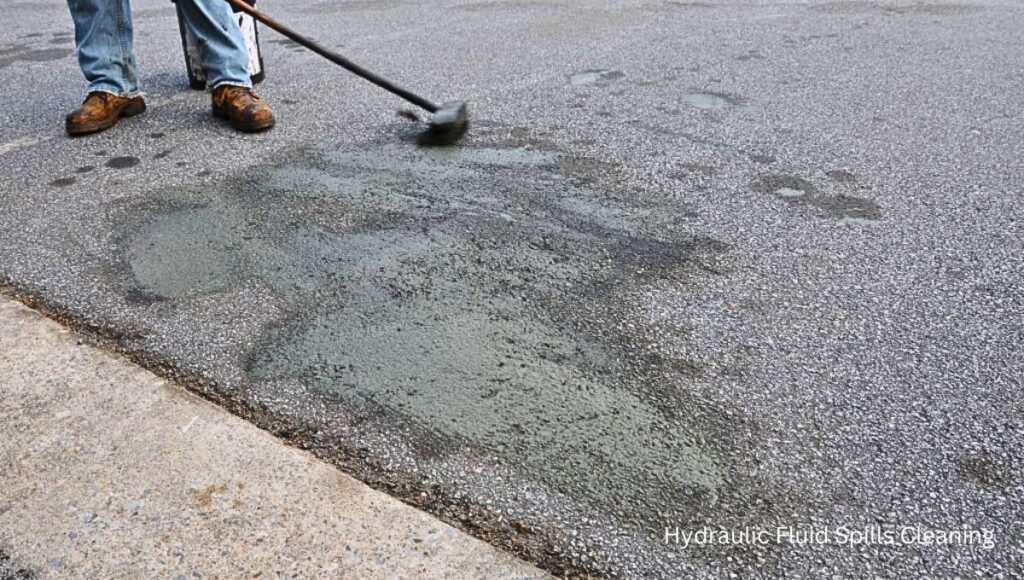
Containment Strategies
Contain the spill to prevent it from spreading. Use absorbent materials like sand or kitty litter. These materials soak up the fluid.
Place barriers around the spill. Use items like plastic sheets or barriers. This stops the fluid from moving further.
| Item | Use |
|---|---|
| Sand | Absorbs fluid quickly |
| Kitty Litter | Effective for small spills |
| Plastic Sheets | Creates a barrier |
Preventing Spread
Act fast to prevent the fluid from spreading. Use shovels to scoop up absorbent materials. This removes the bulk of the fluid.
Dispose of the contaminated materials properly. Place them in sealed bags. Label the bags as hazardous waste.
- Scoop up absorbent materials with a shovel.
- Place contaminated materials in sealed bags.
- Label the bags as hazardous waste.
Rinse the area with water. Use a pressure washer for best results. This ensures a thorough cleaning.
Materials You Will Need
Cleaning hydraulic fluid off asphalt can seem challenging, but with the right materials, it becomes easier. This section will guide you through the essential items you need for an effective cleanup.
Absorbents And Detergents
First, gather absorbents and detergents to tackle the spill. Absorbents soak up the fluid, while detergents break it down.
- Kitty Litter: A great absorbent for soaking up hydraulic fluid.
- Sawdust: Another effective absorbent option.
- Commercial Oil Absorbents: Specifically designed to soak up oil and fluids.
- Heavy-duty Detergent: Use a strong detergent to break down the fluid.
- Degreaser: A powerful option for stubborn stains.
Tools For Cleanup
Next, you will need some tools to help with the cleanup. These tools will make the process more efficient.
- Broom and Dustpan: For sweeping up the absorbent material after it has soaked up the fluid.
- Scrub Brush: To scrub the detergent into the asphalt.
- Garden Hose: For rinsing the area after cleaning.
- Protective Gloves: To protect your hands from chemicals.
- Safety Glasses: To protect your eyes during the cleanup.
By having the right materials, you can ensure a thorough and efficient cleanup. Use absorbents to soak up the fluid and detergents to break it down. Tools like brooms and scrub brushes help in removing the residue.
The Cleanup Process
Cleaning hydraulic fluid off asphalt can be tricky. This guide simplifies the process. Follow these steps for a clean, safe surface.
Absorbing The Fluid
First, absorb the hydraulic fluid. Use materials like kitty litter or sawdust. Spread the material over the fluid. Let it sit for 15 minutes. This allows it to absorb the oil.
Next, sweep up the used absorbent. Place it in a bag. Dispose of it properly. Ensure no residue is left on the asphalt.
Scrubbing The Asphalt
Prepare a cleaning solution. Mix dish soap with warm water. Use a stiff brush for scrubbing. Apply the solution to the stained area.
Scrub the asphalt vigorously. Focus on the stained spots. Rinse the area with water. Repeat if necessary until the stain is gone.
If the stain persists, use a stronger cleaner. You may need a commercial degreaser. Follow the product’s instructions for best results.
Dealing With Stains
Cleaning hydraulic fluid off asphalt can be challenging. Hydraulic fluid stains are tough. They penetrate deep into the surface. Quick action is essential. Proper techniques can save your asphalt from long-term damage.
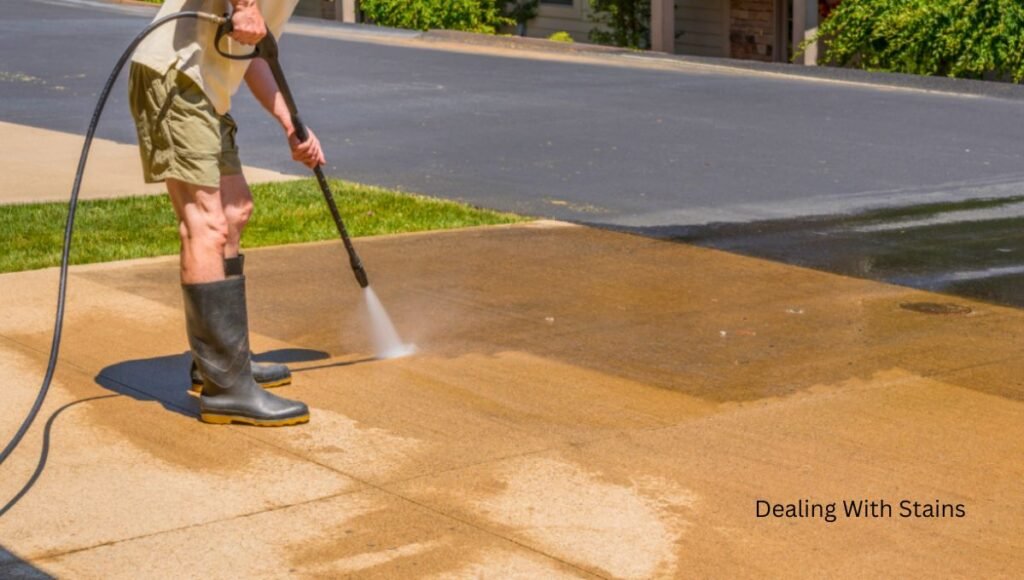
Stain Removal Techniques
Begin with basic tools. You’ll need a stiff brush, soap, and water. Scrub the stain vigorously. Rinse with water afterward. Repeat as needed.
For tougher stains, use baking soda. Sprinkle it generously on the stain. Scrub with a stiff brush. Baking soda helps lift the fluid. Rinse thoroughly with water.
Another effective method is using cat litter. Spread it over the stain. Leave it for a few hours. The litter absorbs the fluid. Sweep it up and dispose of it properly.
When To Use Professional Products
Sometimes, household items aren’t enough. Professional products can be more effective. They are designed to break down hydraulic fluid. Look for degreasers or specialized asphalt cleaners.
Apply the product as per instructions. Usually, you need to let it sit. Scrub the area afterward. Rinse thoroughly with water. Repeat if necessary.
Professional products can save time. They are more powerful than household items. Always read the instructions carefully. Some products might need special handling. Wear gloves to protect your skin.
Environmentally-friendly Disposal
Cleaning hydraulic fluid off asphalt is crucial for the environment. Environmentally-friendly disposal ensures safety and prevents pollution. Follow these steps for responsible disposal.
Disposing Of Contaminated Materials
Collect all contaminated materials. Use absorbent pads or sawdust to soak up the fluid. Place these materials in sealed containers. Label the containers as “Hazardous Waste.”
Do not throw these materials in regular trash. They need special handling. Take them to a hazardous waste disposal facility. Check your local waste management center for guidelines.
Legal Considerations
Follow local laws for hazardous waste disposal. Illegal disposal harms the environment and can lead to fines. Always check your state and city regulations.
Some areas offer free hazardous waste disposal days. Utilize these opportunities. Never dispose of hazardous waste in storm drains or sewer systems. It contaminates water sources.
Keep records of your disposal activities. This can protect you legally. It also shows your commitment to environmental safety.
Preventive Measures
Preventive measures are crucial in maintaining asphalt surfaces. By implementing these measures, you can avoid hydraulic fluid spills. This can save both time and money in the long run. Below are some effective strategies.
Regular Maintenance Tips
Regular maintenance helps keep your asphalt in top shape. Here are some tips:
- Inspect your asphalt surfaces weekly.
- Clean any small spills immediately to prevent staining.
- Seal the asphalt every two years to provide a protective layer.
- Check for cracks and potholes and repair them promptly.
Installing Spill Containment Solutions
Installing spill containment solutions can significantly reduce the risk of hydraulic fluid spills.
Consider these options for better spill management:
- Install drip pans under machinery to catch leaks.
- Use absorbent mats in high-risk areas.
- Set up spill kits with absorbent materials and instructions.
Both regular maintenance and spill containment solutions are key. By following these steps, you can keep your asphalt clean and safe.
How To Remove Hydraulic Fluid Stains From Asphalt?
To remove hydraulic fluid stains from asphalt, use a degreaser. Apply it to the stained area and scrub with a stiff brush. Rinse thoroughly with water.
Can Hydraulic Fluid Damage Asphalt?
Yes, hydraulic fluid can damage asphalt. It softens the surface, making it more prone to cracks and deterioration. Clean spills promptly to prevent damage.
What Household Items Can Clean Hydraulic Fluid?
You can use baking soda, dish soap, and a stiff brush. Apply dish soap to the stain, scrub, and rinse with water.
Is Pressure Washing Effective For Hydraulic Fluid?
Pressure washing is effective for cleaning hydraulic fluid off asphalt. Use a pressure washer with a degreaser to thoroughly clean the area.
Conclusion
Cleaning hydraulic fluid off asphalt requires the right tools and techniques. Follow the steps outlined for best results. Regular maintenance can prevent future stains. Always prioritize safety by wearing protective gear. With these tips, your asphalt can remain clean and safe for use.
Keep your surfaces spotless with these simple methods.
